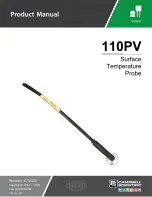
Types 1098-EGR and 1098H-EGR
10
SAFETy SHuT-OFF VAlVE
TO BOIlER
FAST-ACTINg
lOAD VAlVE
TyPE 1098-EgR
gAS
SuPPly
PIlOT
gAS
SuPPly
PIlOT gAS
REgulATOR
TO PIlOT lIgHT
E0710
Figure 5.
Boiler Fuel Configuration Installation Guide
Note
Modulating solenoid load valves provide
a definite time delay in moving from
one position to the other, effectively
preventing sudden pressure changes in
the system. Alternately, a snap-acting
solenoid valve can be furnished with a
characterized valve plug that, by allowing
maximum capacity to be reached at a
greater proportion of total travel, slows
the action slightly. This action does
not control shock as effectively as
modulating solenoid valves.
Installation
1. Perform the Standard Single-Pilot Regulator
Installation section through step 4, making sure
that the regulator is installed with the actuator
below the main valve as shown in Figure 4.
2. Run a 1/2 in. / 13 mm or larger pilot supply line
from the upstream pipeline to the 1/2 NPT supply
connection in the pipe tee as shown in Figure 4. Do
not make the connection in a turbulent area, such as
near a nipple, swage or elbow. If the maximum pilot
inlet pressure could exceed the pilot rating, install
a separate regulator in the pilot supply line and
provide vent valves so that pressure can be properly
isolated and relieved from the regulator.
3.
Attach a 1/2 NPT downstream pressure control
line ten pipe diameters downstream of the
regulator in a straight run of pipe. Do not make
the tap near any elbow, swage or nipple, which
might cause turbulence. Connect the other end of
the control line to the 1/4 NPT connection in the
control pipe tee as shown in Figure 4. Install a
hand valve in the control line to shut off the control
pressure when the bypass is in use. Also use the
hand valve to dampen out pulsations, which may
cause instability or cycling of the regulator.
4. Consult the appropriate instruction manual for
installation of an optional pneumatic or electric
remote control drive unit. For optional remote
pneumatic loading of 6350 or 61 Series pilots,
make the loading piping connections to the
1/4 NPT vent connection.
Startup
1. Slowly open the pilot supply line hand valve.
2. Slowly open the upstream block valve and partially
open the downstream block valve for minimum flow.
3. Slowly open the hand valve in the control line and
make sure that the standby pilot is set far enough
below the working pilot so that the standby pilot
remains closed during normal operation. For
example, with final desired settings of 11 in. w.c. /
27 mbar for the working pilot and 10 in. w.c. /
25 mbar for the standby pilot, begin by reducing
the working pilot setting far enough below
10 in. w.c. / 25 mbar for the working pilot to
shut off. Then set the standby pilot for an outlet
pressure of 10 in. w.c. / 25 mbar. Finally, set the
working pilot for an outlet pressure of 11 in. w.c. /
27 mbar. Table 6 shows how close the standby
pilot can be set to the working pilot setting.
4. Completely open the downstream block valve.
5.
Slowly close the bypass valve, if any.
working Monitor (Figure 6)
Installation
1. For both working monitor regulator and working
regulator, perform the Standard Single-Pilot
Regulator Installation section through step 7.
2. Connect another downstream pressure control line
and hand valve (Figure 6) to the monitoring pilot
according to the monitoring pilot instruction manual.
Attach a 1/2 NPT pressure control line and hand
valve from the intermediate pressure pipeline to the
working monitor regulator. Pipe supply pressure
between the monitoring pilot and the working
monitor regulator according to the monitoring
pilot manual.
For two typical monitoring pilots, Table 7 gives
the spread between normal distribution pressure
and the minimum pressure at which the working
monitor regulator can be set to take over if the
working regulator fails to open.











































